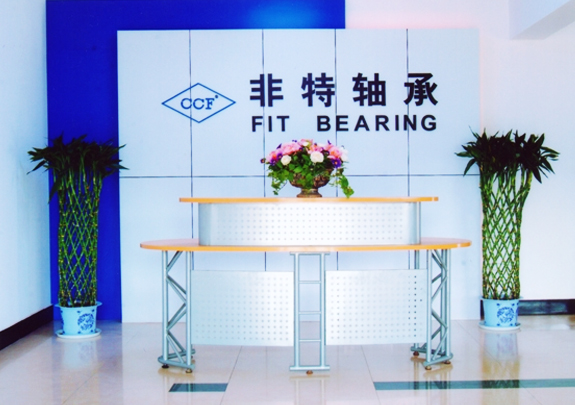CASE IH RIGHT HAND COTTON PICKER SPINDLE / NUT ASSEMBLY - 90 MICRON
VIEW DETAILS
VIEW DETAILS
VIEW DETAILS
VIEW DETAILS
VIEW DETAILS
VIEW DETAILS
VIEW DETAILS
VIEW DETAILS

Zhejiang Fit Bearing Co., Ltd. was established in November 2003 with a registered capital of USD 2 million. The plant covers an area of 35,000 square meters and 20,000 square meters, with more than 120 workers and more than 20 technical management personnel.
At the beginning of its establishment, the company specialized in producing all kinds of low-noise long-life ball bearings. As a professional China Cotton Picker Spindle Parts Manufacturers and Cotton Picker Spindle Parts Factory, After years of development in the bearing industry, we have accumulated rich experience in production and management. In 2013, we began to vigorously develop agricultural machinery parts and construction machinery parts. At present, we have formed a team with exquisite technology and excellent management, capable of R&D, manufacturing, sales and service in the bearing industry and agricultural machinery parts. After years of hard work and development, we have formed a capable R&D and manufacturing team. They have rich knowledge and experience in materials, heat treatment, machining and grinding. There are currently 9 professional R&D engineers responsible for the development of new products.
The main shaft bearing is the most important component in the engine. If the main shaft bearing fails, it will directly cause the engine to stop running. In order to improve the reliability of the eng...
Read MoreBearing failure is a common problem during the operation of bearings, and the form of wear is a type of bearing failure. Wear can also cause significant damage to bearings, and repairing a few pieces ...
Read MoreThe working temperature of cylindrical roller bearings depends on various factors, including the heat output of all relevant heat sources, the heat flow rate between heat sources, and the heat dissipa...
Read MoreHow do different materials used in cotton picker spindle parts impact their durability and performance?
The choice of materials used in cotton picker spindle parts can greatly impact their durability and performance. Here are some factors to consider:
1. Steel: Steel is often used for cotton picker spindle parts due to its strength and durability. It can withstand high loads, resist wear and tear, and provide the necessary stability for smooth operation. High-quality steel alloys can enhance the performance and longevity of the spindle parts.
2. Alloy Steel: Alloy steel is a type of steel that contains other elements such as manganese, chromium, or nickel. These alloying elements can further enhance the durability and strength of the spindle parts. Alloy steel can also have increased resistance to corrosion and heat, which can be beneficial in harsh operating conditions.
3. Ceramic: Some cotton picker spindle parts, particularly the ball bearings or bushings, can be made from ceramic materials. Ceramic offers excellent resistance to wear, high temperatures, and corrosion. It can reduce friction and increase the efficiency of the spindle assembly, leading to better performance and longer lifespan.
4. Composite Materials: In recent years, composite materials like carbon fiber or fiberglass-reinforced polymers have gained popularity in certain spindle parts. These materials offer a good balance between strength and weight. They can reduce the overall weight of the spindle assembly while maintaining adequate durability and performance.
5. Coatings: The application of various coatings, such as chrome plating or ceramic coatings, can enhance the performance and durability of cotton picker spindle parts. These coatings can provide additional protection against wear, friction, and corrosion, ultimately improving the overall lifespan and reliability of the spindles.
Do cotton picker spindle parts have any impact on minimizing fiber damage during the picking process?
Cotton picker spindle parts play a crucial role in minimizing fiber damage during the picking process. Here's how they impact fiber damage:
1. Spindle Material: The material used in spindle parts can affect how gently the spindles interact with the cotton fibers. Softer materials or materials with specific coatings can reduce fiber damage by minimizing friction and preventing excessive rubbing of the fibers.
2. Spindle Design: The design of spindle parts, including the shape, size, and spacing of the spindles, can impact fiber damage. A well-designed spindle system will ensure that the cotton fibers are picked gently and evenly, reducing the chances of fibers getting tangled or broken.
3. Spindle Speed: The rotational speed of the spindles can also impact fiber damage. High-speed spindles can cause more stress on the fibers and increase breakage. Optimal spindle speed should be chosen to maintain a balance between efficient picking and minimizing fiber damage.
4. Maintenance and Replacement: Regular maintenance and timely replacement of worn-out spindle parts are essential to minimize fiber damage. As spindle parts wear down, they may lose their effectiveness in picking gently, leading to increased fiber damage. Regular inspections and replacement of damaged or worn spindle parts can help maintain optimal picking performance and reduce fiber damage.